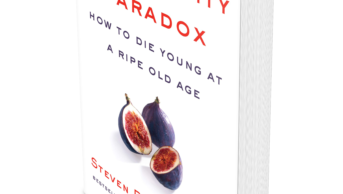
A statement at the beginning of this book, Aseptic Compounding Technique: Learning and mastering the ritual, sets the tone for what is to follow: “The preparation of each compound is like a ritual and must be performed exactly and flawlessly each time”.
The first chapter begins with a discussion of the manipulation skills and techniques required for the compounding of non-hazardous drugs in a horizontal laminar airflow environment. By chapter nine, the reader should have gained sufficient knowledge and skills necessary for the compounding of hazardous drugs in a vertical airflow situation.
The skills and techniques that are discussed in this hands-on text are derived from practice and teaching, along with guidance from the United States Pharmacopeia chapters. Each of the 11 chapters is divided into a number of subsections — goals, background and pertinent information, considerations before starting the process, materials, calculations, ‘what ifs’ and finishing the process. As an example of pertinent information, there is a chapter on mastering hand technique, but this is written from the perspective of a right-handed person, so a left-handed person would have to adjust or reverse the relevant instructions.
Chapters cover topics such as hand manipulation techniques, aseptic processes, clean room technology, large- and small-volume parenterals, compounding cytotoxic and biological injections, and preparing controlled drug injections.
The use of repeater pumps is described in some detail, but no reference is made to the introduction of robots to the compounding process. This should be taken into consideration in the next edition.
The book is well organised, starting with basic essential techniques and ending with the most complex procedures. It offers a step-by-step guide to most aspects of aseptic compounding. As a hands-on guide, it is greatly enhanced by numerous clear illustrations and high-quality photographs; but as a teaching aid, much of what is presented could be better illustrated by a video recording and commentary.
It is suggested that this textbook is designed to advance and reinforce the learning process for pharmacists and pharmacy technicians at all levels of experience. In reality, most benefit will be gained by trainee pharmacy technicians and assistants.
References
Aseptic Compounding Technique: Learning and mastering the ritual by Zachary Thomas Jordan. Pp vi+130. $65: American Society of Health-System Pharmacists (Maryland,US), 2018. ISBN 978-1-58528-565-5. Also available as an eBook: ISBN 978-1-58528-566-2. $59


